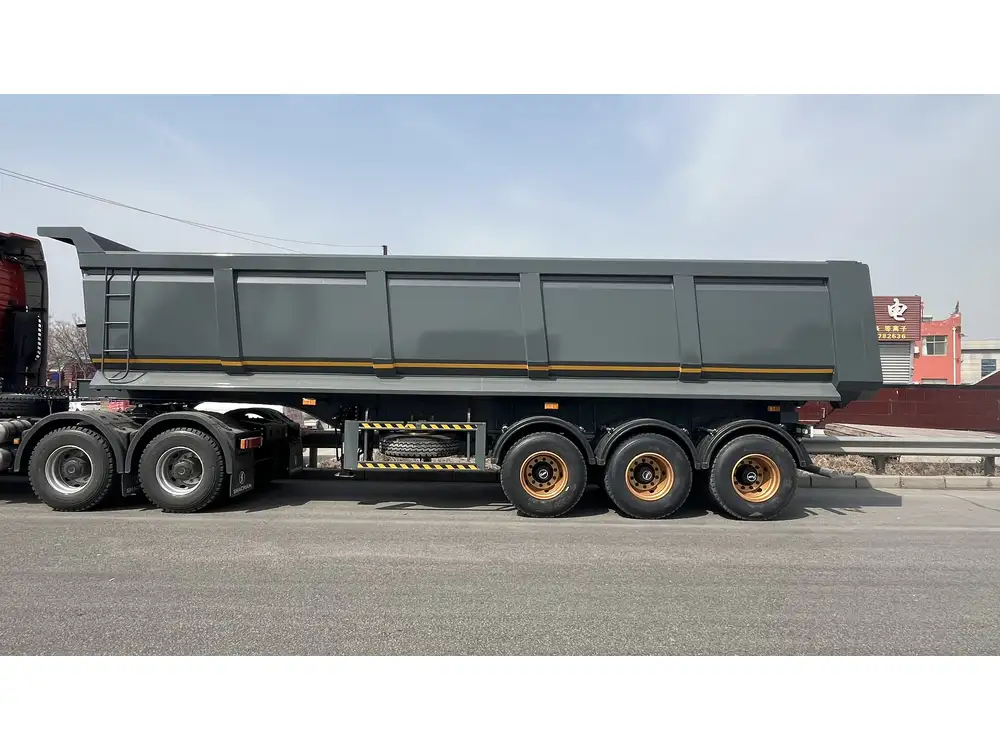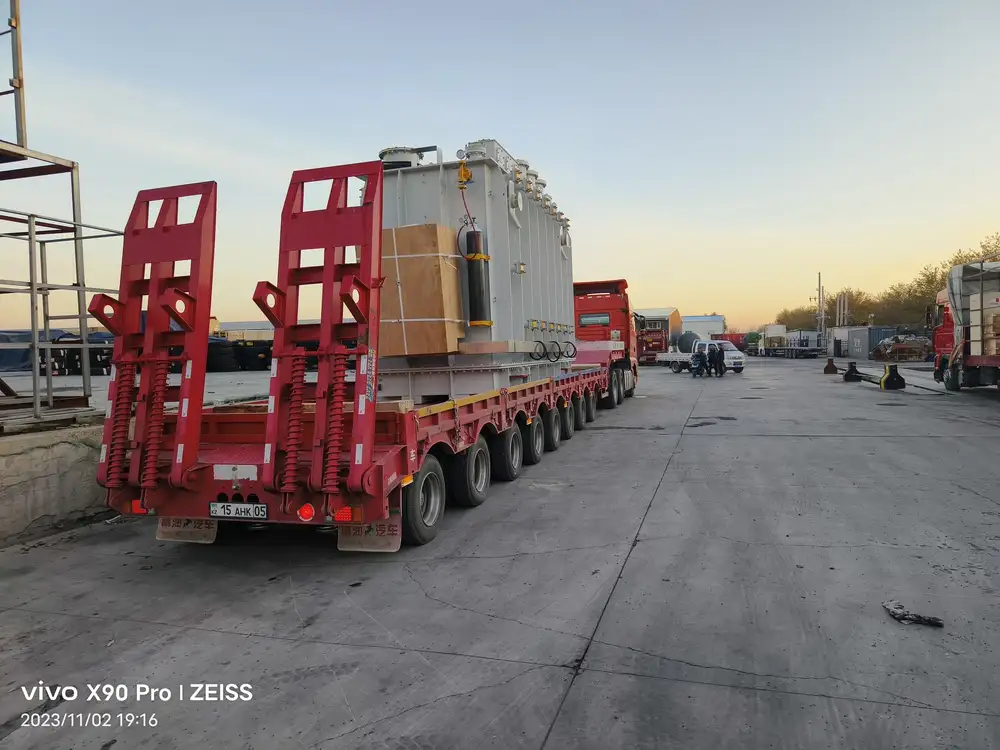When it comes to parking or maneuvering a flatbed trailer, understanding driveway sizing is crucial for both safety and convenience. At [Your Company Name], we recognize the diverse needs of our clients and the complexities surrounding trailer parking. In this article, we will explore the essential factors influencing driveway dimensions tailored for flatbed trailers, enabling optimal space utilization and facilitating smooth logistics operations.
Understanding Flatbed Trailers
Before delving into driveway specifications, it’s vital to comprehend what flatbed trailers are. Characterized by their flat, unobstructed surfaces, these trailers can carry oversized or heavy cargo that cannot be accommodated on a conventional closed trailer. Their versatility serves various industries, including construction, automotive, and agriculture.
Types of Flatbed Trailers
Flatbed trailers come in multiple configurations, influencing the required driveway space. Here are the primary types:
| Type | Description | Length (ft) | Width (ft) | Weight Capacity (lbs) |
|---|---|---|---|---|
| Standard Flatbed | Basic flatbed, versatile for various loads | 48-53 | 8.5 | 48,000 – 52,000 |
| Step Deck | Features a lower deck for taller loads | 48-53 | 8.5 | 40,000 – 50,000 |
| Lowboy | Designed to carry heavy equipment, features a lower profile | 20-30 | 8.5 | 40,000 – 70,000 |
| Conestoga | Covered flatbed with movable tarp system | 48-53 | 8.5 | 42,000 – 52,000 |

Key Factors Influencing Driveway Size
1. Trailer Dimensions
The size of your flatbed trailer will significantly impact the driveway space needed. A standard flatbed trailer typically measures between 48 to 53 feet in length and 8.5 feet in width. The space must accommodate not only the trailer’s dimensions but also additional room for maneuverability.
2. Maneuvering Area
An effective driveway for parking or loading a flatbed trailer requires ample maneuvering space. Plan for a turning radius of at least 30 feet. This allows the driver enough room to turn the trailer safely without hitting curbs, fences, or other obstacles. Incorporate these measurements to your driveway configuration:
- Straight-driveway setup: At minimum, a driveway should measure 12-14 feet wide for easy access.
- Circular driveways: These often require additional width, typically around 14-16 feet, to facilitate better turnarounds.

3. Load Height
Flatbed trailers often carry tall cargo, which can restrict access to overhead clearance areas. Ensure that your driveway has:
- Clear overhead clearance of at least 14 feet, especially when approaching loading docks or garage doors.
- Side clearance to accommodate wide loads. It’s advisable to have at least one foot of clearance on each side.
4. Surface Type
The surface of the driveway plays a critical role in accommodating a flatbed trailer. A durable and even surface is paramount to prevent damage to the trailer and ensure safe handling. Consider the following surface types:
| Surface Type | Advantages | Disadvantages |
|---|---|---|
| Asphalt | Durable; easy maintenance | Can soften in extreme heat |
| Concrete | Very durable; can withstand heavy loads | Higher initial cost |
| Gravel | Drainage-friendly; lower cost | Can shift and require maintenance regularly |
| Pavers | Aesthetic appeal; permeable | Can become uneven if not installed properly |
5. Local Regulations
Always check local zoning and building regulations that may dictate specific driveway dimensions or surface materials. Some regions have laws about how much space is required for vehicle parking or specific weight limits on driveways.

Calculating Optimal Driveway Size
To calculate an optimal driveway size, take the following approach:
- Measure the Trailer: Utilize the specific dimensions of the flatbed trailer being used.
- Account for Maneuvering: Add a buffer zone of at least 20 feet in length and width to allow for turning.
- Consider Additional Features: If the area is prone to weather variations, consider slopes and drainage to prevent water pooling, necessitating further adjustments in size.
- Factor in Loading Bay Needs: If freight operations include loading and unloading, additional space may be essential.
Sample Calculation
Let’s say you have a standard flatbed trailer (53 ft. long, 8.5 ft. wide):
- Trailer Size: 53 ft. (length) x 8.5 ft. (width)
- Maneuvering Space: Add 20 ft. for total length; thus, 73 ft. in length required. For width, allow an additional 2 ft. giving 10.5 ft.
- Final Dimensions: A recommended minimum driveway size could be 73 ft. long by 10.5 ft. wide.
Optimization Tips for Driveways

Incorporate Innovative Designs
Explore creative designs to enhance your driveway functionality:
- Split Driveways: Consider splitting your driveway into two lanes to facilitate incoming and outgoing vehicles.
- Expanded Parking Area: Alongside a primary driveway, a designated parking area can minimize congestion and improve access, especially for commercial premises.
Use of Technology
Leverage technology for the optimal design:
- Driveway Planning Software: Utilize apps or software to visualize the layout before making permanent modifications.
- 3D Mapping Tools: Employ mapping tools to see how your driveway will function under various load scenarios.
Common User Queries

What Is the Minimum Width for a Driveway to Allow a Flatbed Trailer?
For a flatbed trailer, a minimum width of 12 feet is advisable to allow one driver to comfortably maneuver in and out.
How Can I Enhance My Existing Driveway for Trailer Use?
Improve existing surfaces by adding reinforcement with concrete or asphalt, ensuring sufficient width and height clearances.
Are There Regulations Associated With Driveway Dimensions?
Yes, each locality may have unique regulations concerning driveway sizes; always consult local ordinances.

What Is the Ideal Surface for a Commercial Driveway Handling Flatbed Trailers?
Concrete is often considered best due to its durability and strength; asphalt can be more cost-effective but requires maintenance over time.
Conclusion
Knowing the appropriate size for a driveway to handle a flatbed trailer is essential for efficient logistics operations and overall safety. At [Your Company Name], we strive to provide our clients with tailored solutions that cater to individual needs—from selecting the right flatbed trailer to ensuring your infrastructure supports your operational capacity. Make informed decisions based on the insights provided here, and optimize your driveway for effective trailer application.
Invest in your operational efficiency today, allowing us to help ensure that your flatbed trailering needs are met with precision and care.



